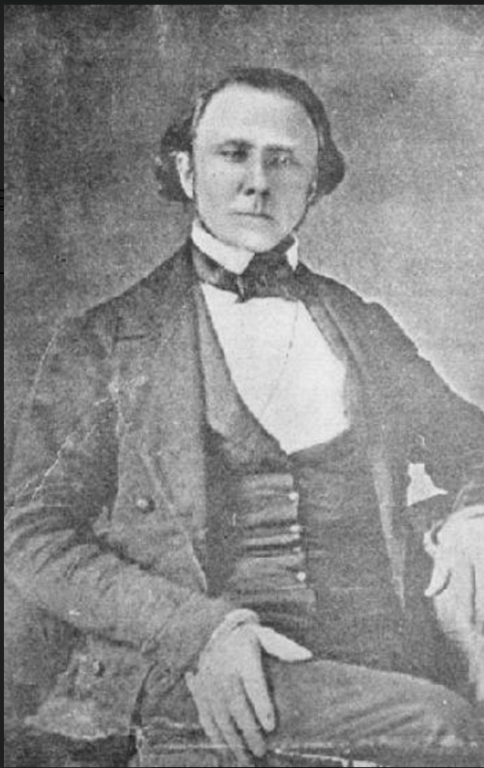by Blue and Gray Education Society, ©2021

northcarolinahistory.org
(Nov. 22, 2021) — In an article of the Journal of Cherokee Studies, Vol. 4, E. Stanly Godbold, Jr., said this about William Holland Thomas: “Save for Thomas Wolfe, who was also from the western mountains, William Holland Thomas is the most important historical person that North Carolina has produced. He was truly a renaissance man, a man for all seasons, a tough fighter against great odds, a small man with large goals and principles for which he was willing to live and die.”
Who was this gentleman?
Born in 1805, his father was a cousin to Zachary Taylor who drowned when William was 10 years old. Growing up without a father, Little Will was heavily influenced by the local men of the Cherokee tribe, who eventually adopted him into their clan. He grew up to be familiar with both White and Cherokee cultures and learned to read and write in both languages.
In 1819, Yonaguska, the chief of the Cherokee tribe located in western North Carolina, made a decision to separate his group from the overall authority of the larger Cherokee Nation. They became “citizenized” under the authority of the state of North Carolina. In 1830, Will Thomas, a close friend of Yonaguska’s, became an agent/attorney of the new separatist tribe. As the U.S. pushed for full removal of the Native peoples, Will, as their representative, helped his North Carolina Cherokees resist removal by buying land for them and advocating for them with government officials in Washington, D.C. Much of the property that Will Thomas bought, over 2,000 acres, is today a part of the current reservation of the Eastern Band of the Cherokee Nation.

When the Civil War began, Thomas organized a legion of local Cherokees and Whites to support the Confederate States of America. It was a true legion, which is a combined arms unit, consisting of infantry, cavalry, and artillery. The 400 Cherokees he recruited formed two of the initial infantry companies. Eventually, he recruited over 2,000 for Confederate service, and it has been estimated that Thomas’s Legion was the largest military unit raised in North Carolina during the Civil War.
As an officer in the service of his country, Colonel Thomas worked to improve his home by appealing to the Confederate government for the right of the local tribes to own property and for the construction of a railroad through his home territory. He argued that North Carolina’s northwestern region could be the New England of the South with a victory in the Civil War. He wrote, “If England and France recognized the Confederacy, we shall have in Western North Carolina one of the most prosperous countries in the world . . . As long as we can hold the Country encircled by the Blue Ridge and Cumberland mountains, and their outside slopes, we have the heart of the South.”
For much of the Civil War, Thomas’s Legion functioned as an independent command in the Department of East Tennessee. By 1864, however, it was transferred to Virginia and participated in Jubal Early’s Shenandoah Valley Campaign. The Legion fought in the battles of Fisher’s Hill and Cedar Creek. By 1865, it was back in North Carolina, and on May 6, this unit fired “The Last Shot” of the Civil War east of the Mississippi River in an action at White Sulphur Springs (near Waynesville), North Carolina.
In 1866, Thomas received a pardon from President Andrew Johnson but soon fell into debt. In 1867, he was declared insane and committed to a state mental hospital. From then until the end of his life, he lived in and out of various sanatoriums.
He died in 1893 and is buried in Green Hill Cemetery, Waynesville, North Carolina.

This Civil War Dispatch has been brought to you by the Blue and Gray Education Society, a non-profit 501-3C
educational organization. Please visit us at www.blueandgrayeducation.org.

